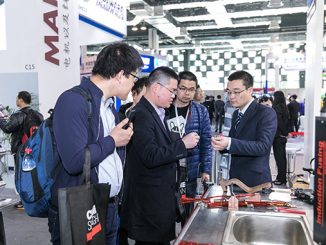Reportlinker.com has announced a new market research report is available in its catalog called, Global and China Passive Component Industry Report, 2012-2013.
The passive component industry is estimated to generate the output value of $21.7 billion in 2013, of which, the capacitor business will contribute around $14.4 billion or 66 percent, the resistor about $2 billion, the inductor roughly $3 billion, and the magnetic component will generate $1.2 billion or so.
The passive component industry is widespread in Japan, Taiwan, United States, Chinese Mainland and Southeast Asia. In particular, Japan holds overwhelming superiority, with the market share hitting 52 percent. With the substantial depreciation of the Japanese yen, the market share of Japan is expected to get further increased. By contrast, the market share of Chinese industrial players is no more than 7 percent, and most of them are specialized in the production of low-end products. Owning to the fact that the production of Chip-based passive components is highly automatic which implies the limited area of production base coverage, a great many of Japanese companies prefer to produce most of their products in local Japan, and turn to China and Southeast Asia for the production of small quantities of low-end products. And the same is true for America which has little possibility to transfer the production beyond the locality.
The capacitor falls into ceramic capacitor, aluminum electrolytic capacitor, PEDT, tantalum capacitor and film capacitor. In particular, the multi-layer ceramic capacitor (MLCC) makes up 62 percent in the capacitor market, with the largest shipment and the highest output value. On average, some 300 to 400 pieces of MLCCs are needed for each cellphone; some 400 to 600 pieces of MLCCs are wanted for each notebook PC; and some 300 to 400 pieces are required for each tablet PC. With the expanding MLCC market capacity, a part of aluminum electrolytic capacitor market is seized by MLCC market. MLCC is a kind of capacitor with the strongest growth momentum, while the aluminum electrolytic capacitor market is expected to shrink in the future.
The aluminum electrolytic capacitor market mainly caters to industrial equipments, white household appliances, TVs and PC motherboards. In particular, the application of aluminum electrolytic capacitor in white household appliances and TVs remains on edge or slips down, while the use in desktop and traditional PC market is on the decline of varying degrees. Since it is ultrathin, Ultrabook has no choice but to employ MLCC. As for other capacitors, the markets remain stable in a relative sense.
In 2013, SEMCO is projected to catch up TDK to become the world’s second largest MLCC company. MURATA is equipped with the highest capacity and the most advanced technology which make it possible to dominate the MLCC market. Calculated by the Japanese yen, both TDK and TAIYO YUDEN are expected to see outstanding growth momentum in 2013. Japanese enterprises are best known for first-class products but higher prices, however, the depreciation of the Japanese yen cuts down the selling prices of products made in Japan.
Top three aluminum electrolytic capacitor producers include Nippon Chemi-Con, Nichicon and RUBYCON which occupy automobile, NC equipment, industrial power supply, wind power generation, LCD-TV, PC and the military market. In China, there are numerous aluminum electrolytic capacitor markers due to its price superiority in raw materials of electrolytic aluminum. But these Chinese counterparts are small and scattered, concentrating in white household appliance, acoustics and display fields.
The inductor market features high concentration, with the industrial leader TDK-EPC sweeping 49 percent market share. Due to special requirements, inductor products are with high gross margin. Thus, even producers with very low output can survive. In reality, there are a lot of small firms in the market, and some of them even realize the annual revenue of less than $1 million. In Taiwan, there are around eight larger industrial players, the largest one among which is Chilision that harvested the revenue of $121 million in 2012. In Mainland China, Sunlord boasts the largest one, with the revenue in 2012 approximating $118 million.



